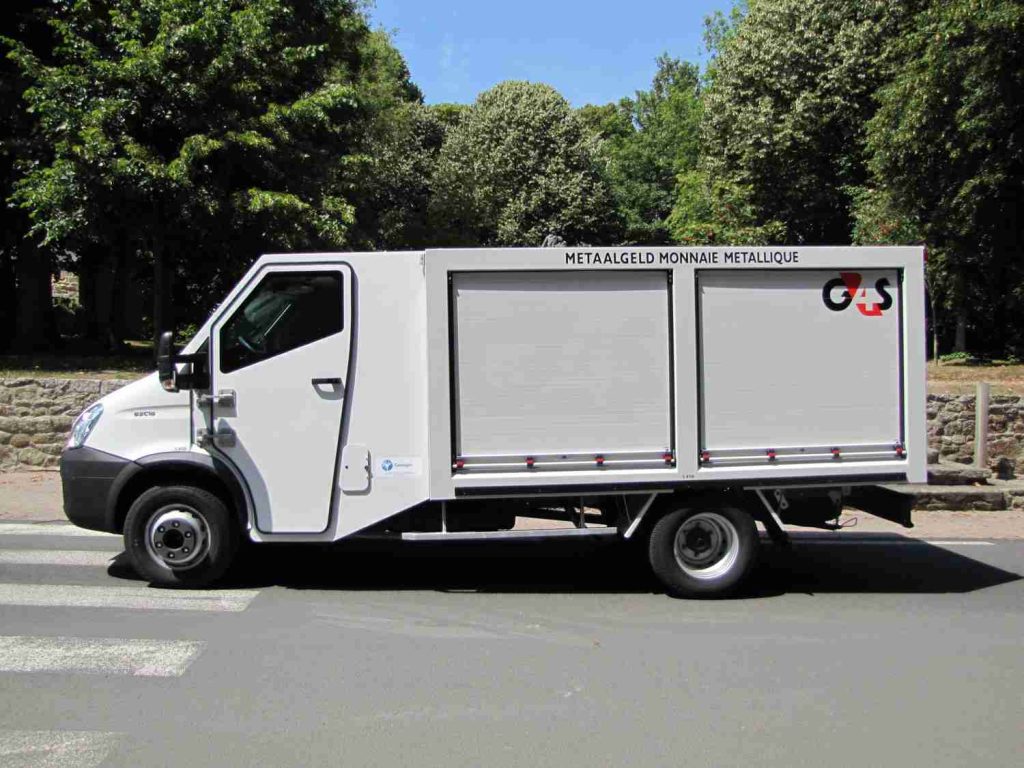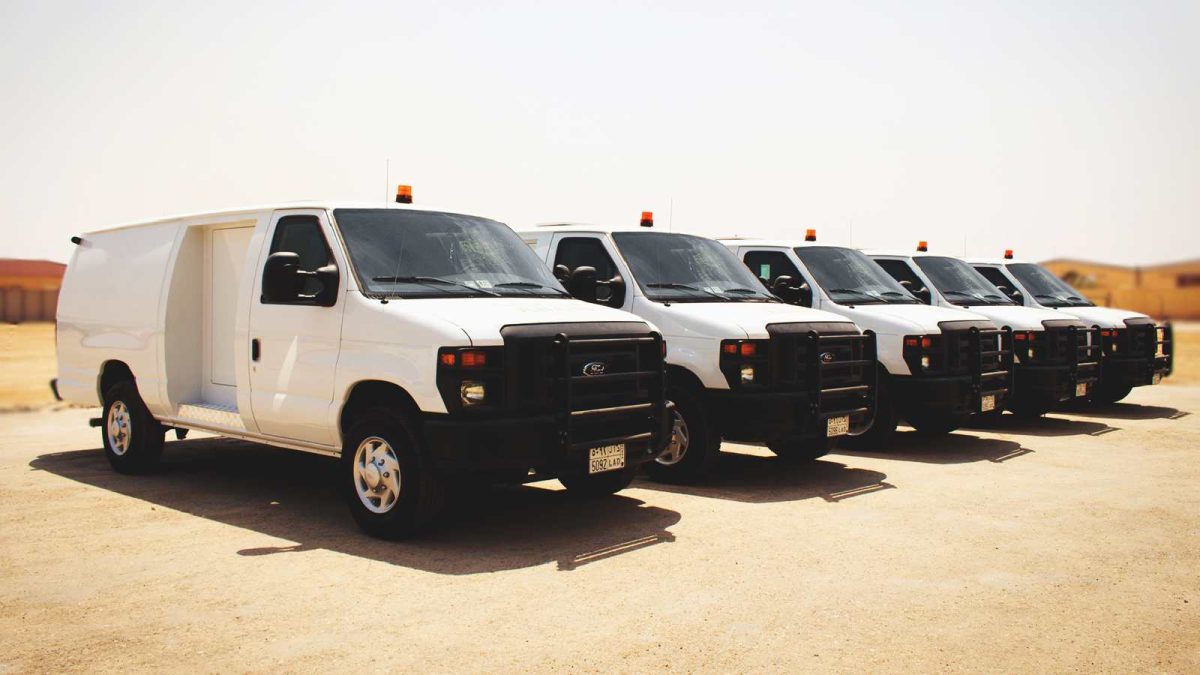One of the first nations in the Gulf to implement a professional security strategy is the UAE. The flow of high-value items like gold, diamonds, and cash also increased when Dubai and Abu Dhabi were chosen as the regional headquarters and supply chains of global corporations. As a result, the UAE’s cash in transit businesses has been increasing lately.
In this article, we will talk about what cash in transit means, how it work, the responsibilities of an individual in this area, and more. There are many companies in the UAE with SIRA approval for cash-in transit service, however, not all of them specialize in the storage, security, and transportation of cash. Nevertheless, the ones that do are the best in the industry. Let us observe:
1. What is cash in transit security?
2. How does the cash-in-transit process work?
3. Learn about the security guard’s responsibilities in cash-in transit
4. Know the operational task in cash collection in cash transit
5. Get in touch with Emirati Guard for your cash services
What is Cash in Transit Security?

For those wondering what is cash in transit, here is the answer. Cash in transit (CIT) refers to circumstances in which real cash money is in the phase of being transferred from one situation to another.
Parallel to cash valuables in transport (CVIT), cash-in-transit refers to the movement of actual cash; such as when it is taken out of a bank vault and handed to a client in an armored car. Today, the phrase is more commonly used to describe the state of deposits or transfers of money as funds are transferred from one account to another.
Private security Dubai that provide cash handling as one of their services make up a large portion of the cash-in-transit industry. By law, CIT businesses are considered logistics organizations in the private-security industry and must comply with transportation and security rules.
The CIT sector is subject to federal, state, local, and municipal laws, as well as social norms and current behaviors. The Interior Ministry, Justice Ministry, and police are often the responsible authorities for the cash security sector. There may be limits and restrictions put by laws and regulations regarding the employment of weapons, vehicles, the bare minimum crew size, and the application of intelligent banknote neutralization systems.
How Does the Cash-in-transit Process Work?
The biggest retailers, banks, and other companies do not really keep goods in their premises after work hours, and neither do jewelry chains.
Consequently, custodial service providers receive money and valuables. Therefore, these agents secure them and deliver them back to the company during work hours.
The UAE’s private security firms with SIRA or PSBD licenses offer their clients cash transfer services.
Cash in transit means moving real, tangible cash assets from one place to another. Professional security firms frequently handle these physical transfers of legal currency; such as delivering cash from a treasury facility to a bank or moving money from one branch of one bank to another branch located in a different part of the city.
Learn About the Security Guard’s Responsibilities in Cash-in-transit
Here are some of the responsibilities of security guards to prevent cash in transit robbery:
- When moving cash or other valuables, ensure their security.
- Liable for maintaining a record of money and other assets.
- Maintain constant contact with the development control center while moving valuables.
- Inspect the car before boarding it.
- Ensure the security tools are in good working order.
- Cooperate with any employees handling money or valuables; including the client’s high-rise building security guard.
- When working with clients, adhere to your company’s policies and procedures as well as their specific protocol.
- Stay alert at all times, and have a plan in place for dealing with emergencies.
- Avoid unnecessary car stops.
- At any moment, including at the cash pickup location, the cash delivery location, and while escorting the asset on the road, execute the cash-in-transit procedure.
What is the Threat of Cash in Transit Teams?
The CIT team is in tremendous peril since criminals are always well-prepared and organized for robberies. The CIT crew’s health and safety are where most attacks terminate. Therefore, while carrying cash, being aware of the potential dangers aids the CIT crew in completing their business without incident.
Resources and tools for the CIT crew:
- Documentation such as:
- ID for the company’s employees.
- A bank ID.
- Card with police information.
- Documents for delivery or collection.
- Individual radio.
- Other communication methods, such as cell phones.
- Visor-equipped helmet.
The team’s coordination and communication are essential for a successful operation; thus, you must stay in touch with:
- Central command post.
- CIT driver when cargo and escort are on a pavement road.
- Owners of the goods.
What are the Types of Cash-in-transit Operations and Procedures?
The CIT process has been split into two components, however, both parts require the same security measure to protect them from risk:
- Vehicle mounting and dismounting on foot.
The four-phase CIT operation that the cars complete ensures that everyone on board follows the cash-in-transit guidelines.
Prior to the Procedure
It is crucial to confirm the following prerequisites before performing the vehicle CIT operation:
- Make sure the existing security equipment is fully functional, including:
- 360° video.
- Access controls.
- GPS device.
- Security system.
- Compartments and a vault.
- Containers for CIT and dummy bags.
- Radio transmissions.
- No significant exhaust or engine compartment leaks.
- Functioning lights and signals
- Escape hatch is working.
- Set tire pressures.
- Refueled and locked the filling top.
- Windows are tidy.
- Interior is tidy and well-arranged.
- The cargo is set in place.
- Limits for mass and cash value are not met
While Traveling
- Report progress via prearranged communications checks.
- For security reasons, use reference codes rather than real-world place or site names.
- If anticipated arrival times alter due to any factor, such as traffic, a route change, etc., notify the central control room.
- Continually scan the area around the car.
- Driver and crew are in charge of this, either whether moving or still.
- Record and report any suspicious or odd observations.
- When at traffic lights or crossroads, be extra cautious.
Arriving for the Pickup or Delivery
- Look around the surroundings for any potential hazards or dangers.
- Inform the central command room on your arrival.
- If there are no immediate hazards, the Escort can get out and go about the car looking for threats or risks. Additionally, conduct a secondary visual sweep of the area to look for dangers.
- Maintain a professional and alert appearance. Furthermore, they must notify the Courier to leave with the CIT container.
Parking and offloading from an armored vehicle pose a high danger of an accident or a safety problem. As a result, vehicles must provide ample space to unload securely. Furthermore, escort and courier must be cautious of other traffic in the area.
On the other hand, the number of the CIT crew might vary according on the circumstance and threat level. However, most CIT operations are conducted by one courier, one driver, and three escorts.
Dismount Operation
When the CIT team arrives at the delivery or collection spot, they will exit their trucks and go across the pavement to the cash transfer station, which could be a business, bank, or organization. During the transfer from the armored car to the transfer area:
- Ensure that all protective items are properly in place.
- The T-Baton is kept in the standby mode.
- Get to the transfer place as soon as possible.
- Choose a walking pattern that is appropriate for the path.
- Make the courier’s area of protection a buffer zone.
- Unless there is an emergency, never stop.
- Be alert for dangers, such as diversions.
- Plan to detour or get back to the armored car if necessary.
In the Transfer Area
- The escorting team will:
- Radio check to make sure the driver arrived safely.
- Complete cash delivery or collection Secure CIT container and confirmation paperwork.
- Maintain constant vigilance and safety.
- The driver will:
- Continue to ride inside the car.
- Not move the car.
- Continue to monitor security concerns and report them after leaving the transfer area and returning to the car.
- The escort team will contact driver via radio.
When Coming Back to the Car
- Choose a walking pattern that is appropriate for the path.
- To safeguard the courier, create a buffer zone.
- Search the area around the vehicle with your eyes.
- Fill the CIT container after opening the car.
Know the Operational Task in Cash Collection in Cash Transit

Transporting valuables and cash is strictly prohibited on a number of fronts. Cash-in-transit businesses and other infrastructures providing CIT services must adhere to various laws, the demands of the regulatory agency, internal banking procedures, or the norms put forth by an independent service provider. Here are the tasks in cash collection for cash in transit:
Customer Service management:
- Administration of collection objects and consumer data.
- Automatic document flow for ATM cash refills. Management of agreements and SLAs, production of supporting documentation.
- Control and automation over service billing and payment.
Route Management Service for Cash in Transit Team:
- Creation of the most efficient routes and schedules for transportation using different regulations.
- Swift route modification for efficient ATM cash refilling.
- Optimization of the route while taking into consideration the transport options, insurance limitations, and other factors.
- Centralization of valuables transportation application processes.
Resource Management Solutions:
- Squad creation and dispersion along routes.
- Inventory control (bags, weapons, cassettes, and other objects).
- Taking into consideration the wear and tear on transportation (armored cars, armored trucks, etc.) as well as fuel and oil usage.
Order and Planning Management:
- Creation of a collection brigade’s route sheet on paper or electronically
- Monitoring the status of an ATM refill order in real time. When valuables are delivered and accepted, GPS displays or QR code scanners can be used to access the path.
- Instant alarms.
Analytical Reporting:
- Analysis of revenue by clients, areas, and services.
- Reports on Contractual Compliance (SLA).
- Evaluation of the collecting service’s inventory’s quality.
- Measurement of the employees’ workloads at cash collecting services.
Get in Touch with Emirati Guard for your Cash Services
This is how the security sector does the CIT function according to industry standards. The security personnel involved in the operation must be conscious of any potential threats and have a strategy in place to deal with them.
Make sure your tools and vehicles are in functioning order while you are going through CIT. Make sure to only halt moving traffic when there is a traffic signal. Be more cautious as you make your way back to the car from the collection point.
If you are looking for a company that provides cash in transit services, you are in the right place. Emirati Guard is the perfect private security provider for businesses in the UAE. We will make sure that your cash has the necessary protection and get to the place safe. Consequently, if you want to learn more about what we do, you can send us an email at [email protected] or call at +971 43 316 688.



